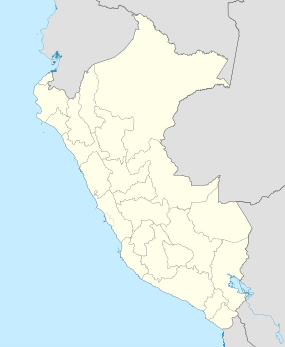Pikimachay
| Location | Peru |
|---|---|
| Region | Ayacucho Region |
| Coordinates | 13°02′27″S 74°13′27″W / 13.04083°S 74.22417°WCoordinates: 13°02′27″S 74°13′27″W / 13.04083°S 74.22417°W |
Piki Mach'ay (Quechua piki flea, mach'ay cave, "flea cave", also spelled Pikimachay, Piquimachay, where machay means "drunkenness", "to get drunk" or "a spindle packed with thread") is an archaeological site in the Ayacucho Valley of Peru. Radiocarbon dates from this cave give a human presence ranging from 22,200 to 14,700 years ago, but this evidence has been disputed and a more conservative date 12,000 BCE seems possible.
Richard S. MacNeish was the first archaeologist to explore Piki Mach'ay. Evidence of long-term human occupation has been found at the site, though that evidence still remains controversial.
The cave is part of the Ayacucho complex, a culture defined by several cave sites including Jaya Mach'ay ("pepper cave").
Artifacts discovered in the site include unifacial chipped tools, such as basalt and chert tools, choppers, and projectile points, and bone artifacts of horses, camelids (Camelidae), giant sloths (Megatherium) dating from 15,000—11,000 BCE.
Piki Mach'ay yielded some of the oldest plant remains in Peru, including an 11,000-year-old bottle gourd. Strata from later periods at the site revealed fishtail points, manos, and metates. Plant remains indicate that, before 3000 BCE, amaranth, cotton, gourds, lucuma, quinoa, and squash were cultivated in the Ayacucho Basin before 3000 BCE. By 4000 BCE corn (Zea mays) and common beans were grown. Chili remains date from 5500—4300 BCE. The large amounts of guinea pig bones suggest possible domestication, and llamas may have been domesticated by 4300–2800 BCE.
...
Wikipedia

